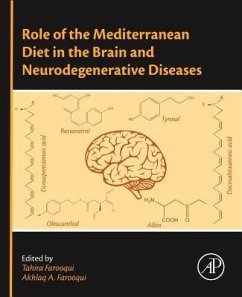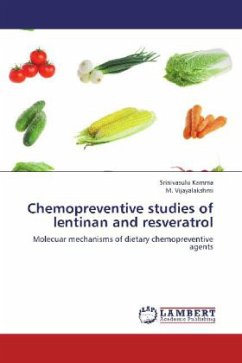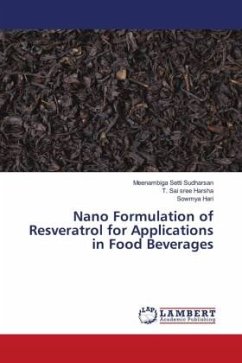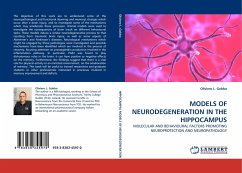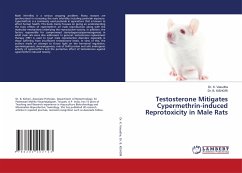
Molecular Effect of Resveratrol on Neurodegeneration Induced In Rats
Versandkostenfrei!
Versandfertig in 6-10 Tagen
39,99 €
inkl. MwSt.

PAYBACK Punkte
20 °P sammeln!
The cross-talk between neurons and non-neuronal cells seems to be a critical step in the progression of neurodegeneration and molecules that have a beneficial role may turn into harmful players. Aluminum is a well documented neurotoxin, resulting from the fact that it replaces the usual metal ions in proteins and enzymes, causing a change in the replication rate or decreasing the metabolic rate which may triggers neuronal damage. The plant polyphenol resveratrol has been touted to have multiple health benefits including neuroprotection. A commonly cited mechanism of resveratrol action is via t...
The cross-talk between neurons and non-neuronal cells seems to be a critical step in the progression of neurodegeneration and molecules that have a beneficial role may turn into harmful players. Aluminum is a well documented neurotoxin, resulting from the fact that it replaces the usual metal ions in proteins and enzymes, causing a change in the replication rate or decreasing the metabolic rate which may triggers neuronal damage. The plant polyphenol resveratrol has been touted to have multiple health benefits including neuroprotection. A commonly cited mechanism of resveratrol action is via the activation of the longevity factor Sir2/Sirt1, whose deacetylase activity on several transcription factors has stress resistance and pro-survival effects. In this study we propose APE1/Ref-1 (APE1), a multifunctional protein possessing both DNA repair and transcriptional regulatory activities, as newb reserveratrol-mediated neuroprotection target. We believe that understanding the molecular balance between total oxidant versus antioxidant capacities as well as pro-apoptotic versus pro-survival proteins during neuroinflammation is essential for therapeutics development.



